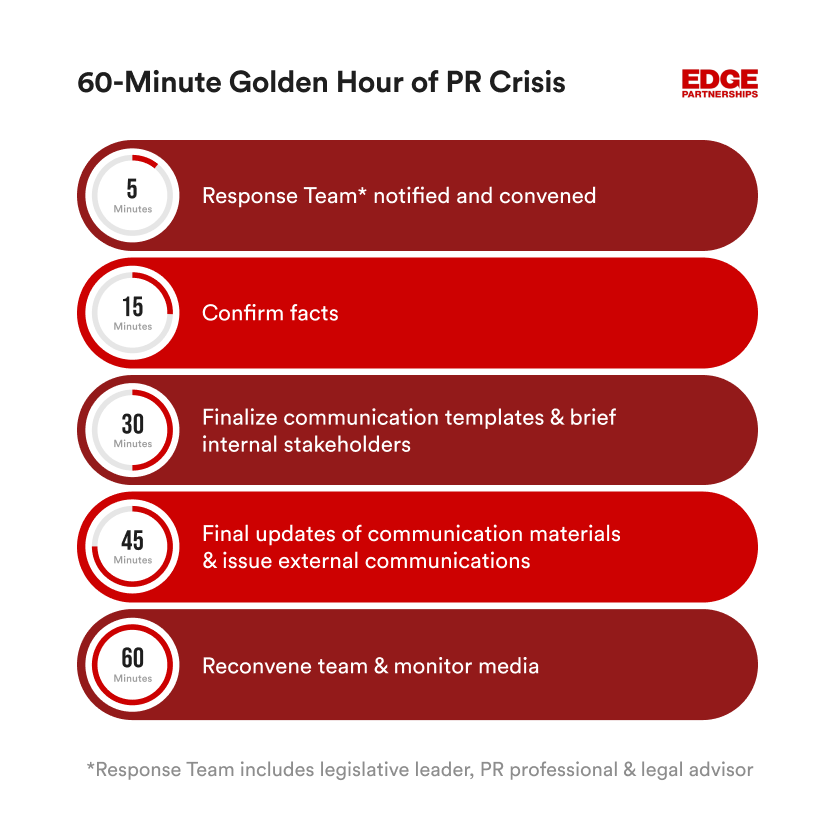5 Steps For Successful Communication During a Crisis
As with most things in life, having a plan before a crisis occurs is essential, especially for those in the public eye. A little preparation can mean the difference between professional survival and personal devastation.
Issues necessitating a crisis communications strategy range from inappropriate commentary and controversial votes to indiscretions and criminal activity. While the list of what-if incidents is endless, the immediate actions taken to mitigate reputational damage are summed up as the Golden Hour of a public relations crisis:
Step 1: Scenario & Response Team – 1 to 5 minutes
Outline the facts of the situation. This can be a time of high emotions. Thus, it’s imperative to objectively identify the details without trying to predict outcomes and opinions.
Convene a trusted set of advisors, which can include public relations, legal, legislative leadership and family.
Step 2: Plan – 1 to 15 minutes
Reaffirm the facts.
Create a crisis strategy that is aligned with your values.
Identify key audiences to communicate with regarding the crisis.
Take an inventory of communication distribution assets, including social media, website, phone calls, emails, text messages, etc.
Step 3: Act – 15-30 minutes
Finalize key messages, statements, news releases and other communications, such as emails, text messages and phone scripts.
Brief internal stakeholders who need to hear the news directly from you before seeing it in the media.
Step 4: Respond – 30 to 45 minutes
Issue external communications.
Discuss only the facts; avoid editorializing or over sharing.
Maintain open communications and transparency between you and key audiences.
Answer media inquiries under the advice of a PR professional.
Refer to Rishar’s Top 10 for Media Relations
Step 5: Monitor – 50 to 60 minutes
Reconvene advisors.
Monitor media and social content.
Convene briefings.
Make strategy adjustments as needed.
Bad things happen – some in our control and others beyond. Taking these five important steps provides a strong foundation for launching an effective communications response. Remember the insightful words of President John F. Kennedy who reminded us, “The Chinese use two brush strokes to write the word ‘crisis.’ One brush stroke stands for danger; the other for opportunity. In a crisis, be aware of the danger – but recognize the opportunity.”
Need a marketing & PR strategy partner? Get in touch with Edge Partnerships


